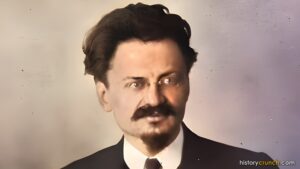Education in the Industrial Revolution underwent a transformation from that of pre-industrial societies to the modern education systems that are common today. The Industrial Revolution, a period of rapid industrialization and technological innovation from the late 18th to the early 19th century, brought about significant changes in many aspects of society. One of the areas profoundly impacted was education. Before this period, formal schooling was largely limited to the wealthy, with most children receiving little to no education. However, the demands of an industrialized society necessitated a more educated workforce, leading to significant reforms in schooling.
EDUCATION BEFORE THE INDUSTRIAL REVOLUTION
Before the Industrial Revolution, education was primarily reserved for the wealthy. For instance, wealthy families could afford private tutors or to send their children to exclusive schools, while the majority of children, especially those from working-class families, had little or no access to formal education. In fact, most education for the working-class was informal, taking place at home or through apprenticeships that focused on practical skills rather than academic knowledge.
With that said, some children from the working-class attended charity schools or Sunday schools established by religious organizations. These institutions provided basic literacy and religious instruction, but their reach was limited, and they often lacked resources and qualified teachers. The primary goal of these schools was to teach moral values and basic reading skills, rather than to offer a complete education.
HOW DID THE INDUSTRIAL REVOLUTION IMPACT EDUCATION?
As industrialization progressed, the nature of work changed dramatically. Factories and new technologies required workers who could read instructions, perform basic math, and understand technical concepts. This shift created a demand for a more educated workforce, prompting a reevaluation of the importance of education for all social classes. For instance, the working-class were often the ones completing the work in the factories and mines of the Industrial Revolution. As such, the need for them to have a basic education grew as the era progressed.
One of the major social issues during the Industrial Revolution was child labor. Many children worked long hours in factories, mines, and other industrial settings, which left little time for schooling. The harsh realities of child labor and its impact on children’s health and development eventually led to social reform movements advocating for mandatory education and restrictions on child labor. In fact, as the movement to end or limit child labor grew, so too did the calls for education. It was viewed as a positive for society because schooling would allow for the children to be taken care of while the parents were working.
In response to the changing social and economic landscape, various countries began implementing educational reforms. For example, in Britain, the Factory Acts of the early 19th century included provisions to limit child labor and ensure that children received some form of education. More specifically, the Factory Act of 1833 required factory owners to provide two hours of education per day for child workers.
ESTABLISHMENT OF PUBLIC EDUCATION SYSTEMS
The mid-19th century saw the establishment of more formal public education systems. Governments recognized the need for a standardized approach to education to ensure that all children had access to basic literacy and numeracy skills. In 1870, the Elementary Education Act (also known as the Forster Act) was passed in England, making elementary education compulsory for children aged 5 to 13. Similar reforms occurred in other industrializing nations, such as the United States and parts of Europe.
The curriculum during the Industrial Revolution initially focused on basic skills such as reading, writing, and arithmetic. As education systems developed, subjects like history, geography, and science were gradually introduced. Schools during this time were typically characterized by large class sizes, limited resources, and strict discipline.
Despite the progress made in establishing public education systems, access to schooling remained unequal. Rural areas often lacked sufficient schools and teachers, and children from poorer families continued to face barriers to education. Additionally, girls were frequently given fewer educational opportunities than boys, as societal norms prioritized domestic roles for women.
ROBERT OWEN AND EDUCATION IN THE INDUSTRIAL REVOLUTION
Robert Owen, a social reformer and industrialist, also made significant contributions to education during the Industrial Revolution. He established model schools at his New Lanark mills in Scotland, where children received a balanced education that included academic instruction, vocational training, and physical education. Owen’s approach emphasized the well-being and development of the whole child, and his ideas influenced later educational reforms.
THE SPREAD OF EDUCATIONAL REFORMS
Throughout the late 19th and early 20th centuries, compulsory education laws spread across Europe and North America. Countries like Germany, France, and the United States implemented mandatory schooling, often inspired by the successes and challenges observed in earlier reforms. These laws helped to standardize education and ensure that all children received at least a basic level of schooling. This trend continues still today, with the modern education systems we see across Europe and North America.



